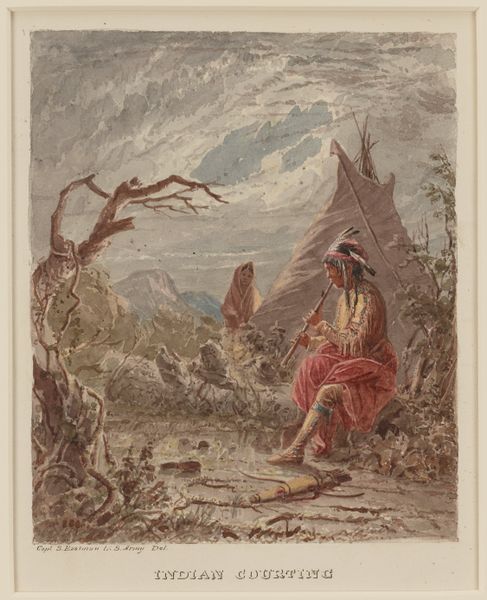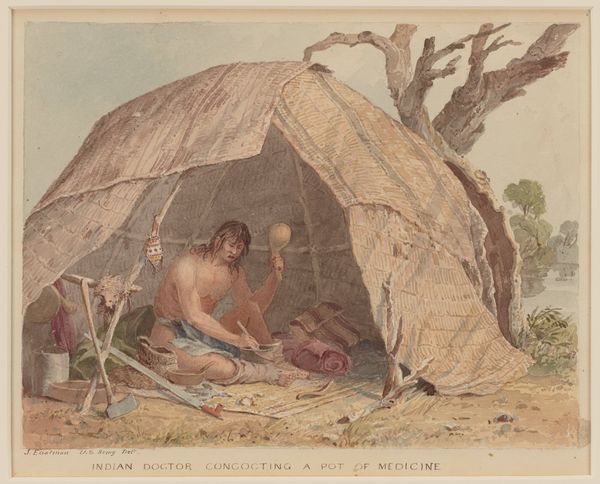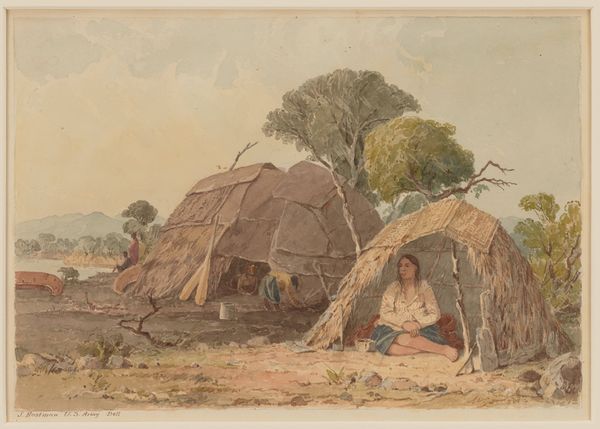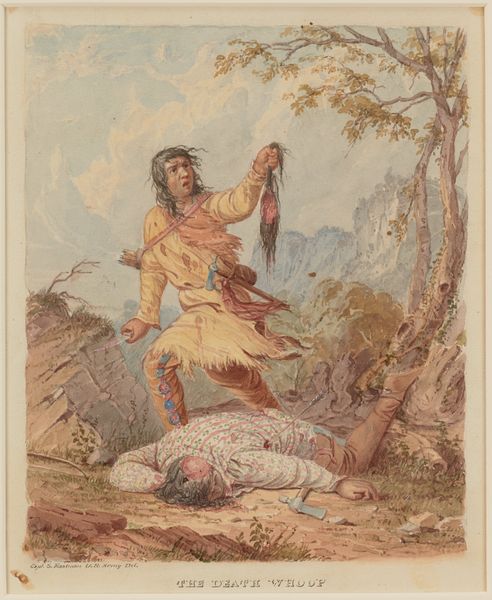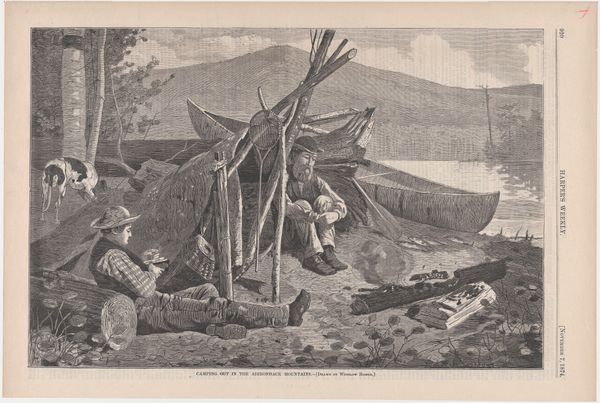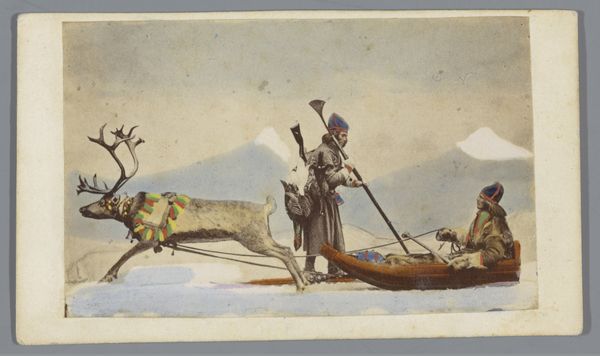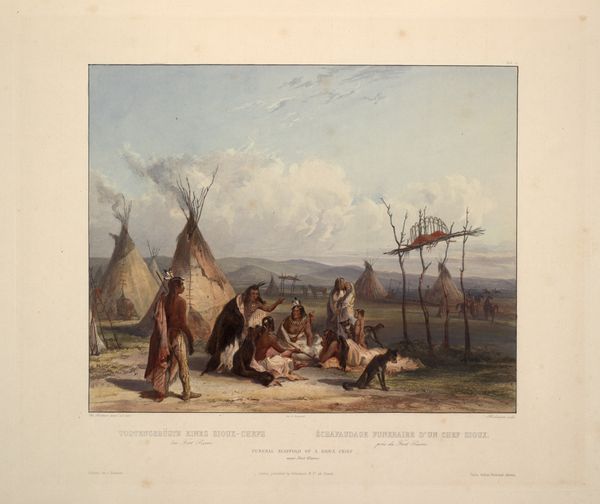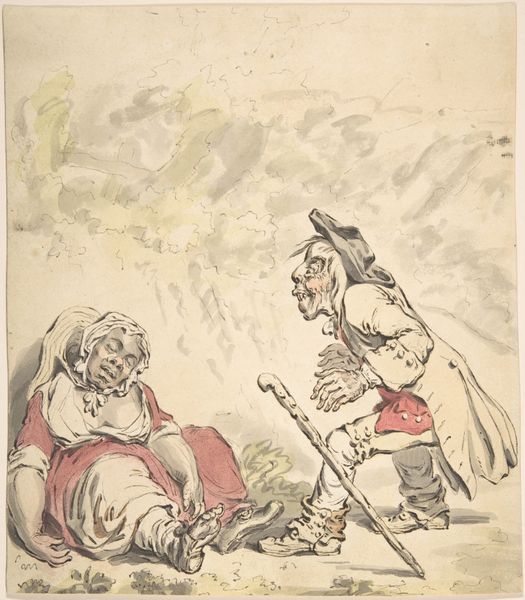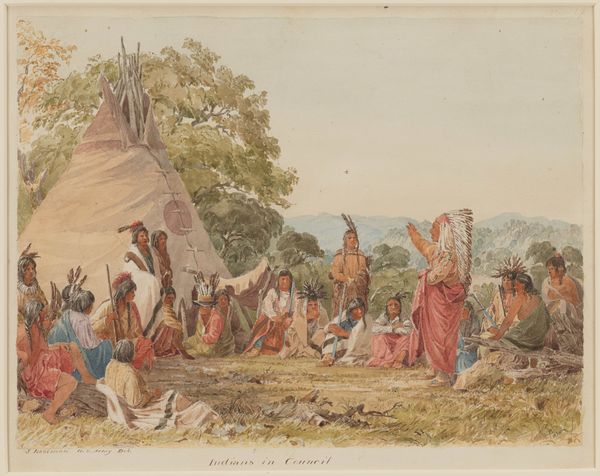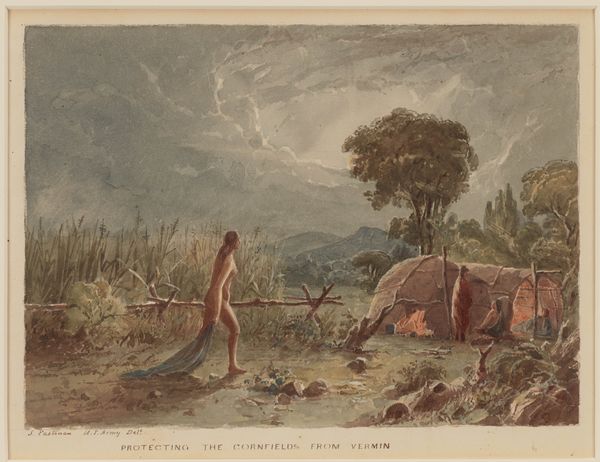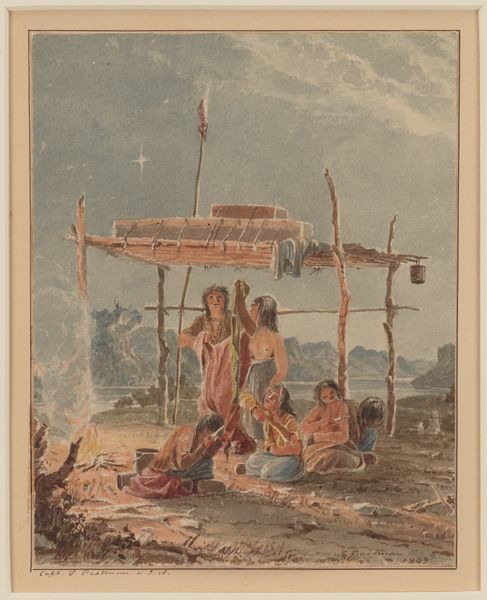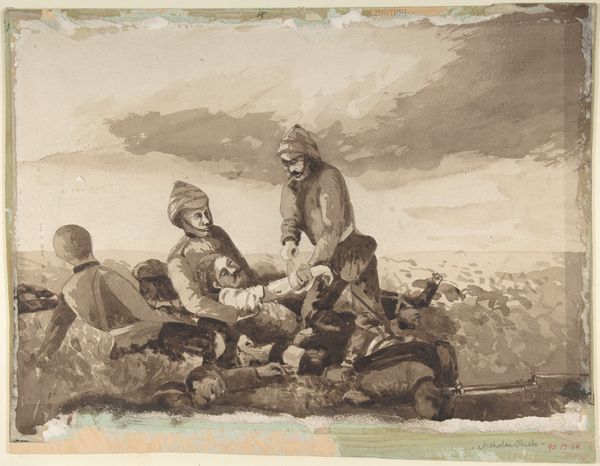
drawing, paper, watercolor
#
drawing
#
narrative-art
#
paper
#
watercolor
#
coloured pencil
#
indigenous-americas
Dimensions: 7 7/8 × 6 3/4 in. (20 × 17.1 cm) (image)7 3/4 × 6 11/16 in. (19.7 × 17 cm) (sheet)21 1/2 × 17 9/16 × 1 1/8 in. (54.6 × 44.6 × 2.9 cm) (outer frame)
Copyright: Public Domain
Seth Eastman created this watercolor called 'Medicine Man Curing a Patient' in 1850. As a military officer, Eastman was often stationed at forts in Native American territories. He used these experiences to document the appearance and customs of indigenous people, but how can we interpret these depictions? Eastman’s work gives us insights into the period's social and institutional context. During the 19th century, the US government's policy of assimilation sought to transform Native Americans by eradicating their cultural practices, and art was one way this ideology was enforced. Eastman’s pictures were made to document a culture that many believed would soon disappear. While seeming to preserve Native American culture, he was also participating in its destruction. To truly understand Eastman’s art, we need historical research. We can examine government documents, period newspapers, and the writings of Native Americans themselves. By understanding its historical context, we recognize that art’s meaning is always dependent on the social and institutional forces of its time.
Comments
minneapolisinstituteofart almost 2 years ago
⋮
U.S. Army Captain Seth Eastman was a trained artist who served twice on the frontier at Minnesota’s Fort Snelling, from 1830 to 1832 and again from 1841 to 1848. His extensive firsthand, peaceful encounters with Native Americans gave him extraordinary opportunities to observe their customs and practices, which he documented in his art. He became known as the “pictorial historian of the Indian.” This watercolor belongs to a series that he made between 1849 and 1855 to illustrate Henry Rowe Schoolcraft’s massive survey, "Historical and Statistical Information Respecting the History, Condition and Prospects of the Indian Tribes of the United States" (Philadelphia: Lippincott, Grambo & Co., 1851-57). Mia’s 35 watercolors and drawings for the project represent an astounding array of subjects: muskrat hunting, fish spearing, pest control, rice gathering, maple sugaring, shelter, travel, medicine, mourning, dancing, civics, and topography. With such variety and Eastman’s well-informed clarity of depiction, they constitute an unparalleled visual account of native ways in our region.
Join the conversation
Join millions of artists and users on Artera today and experience the ultimate creative platform.
